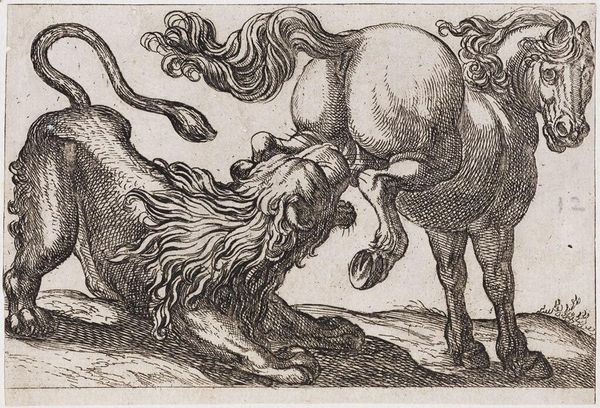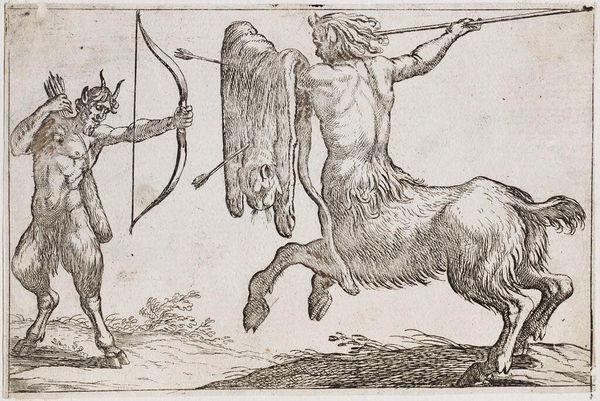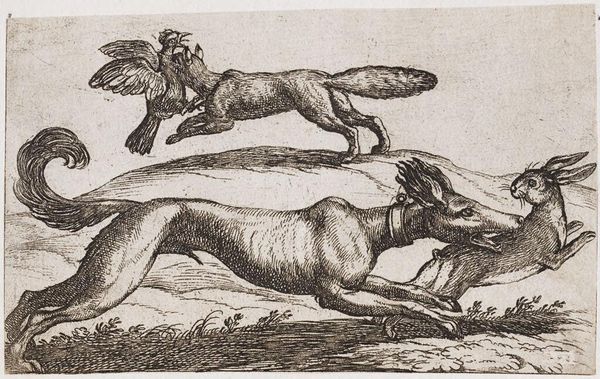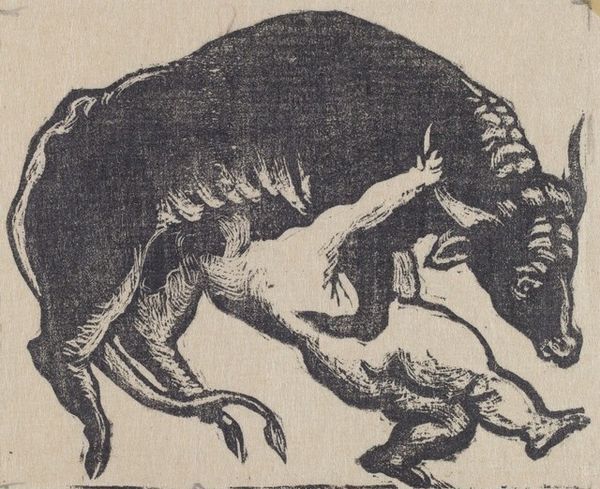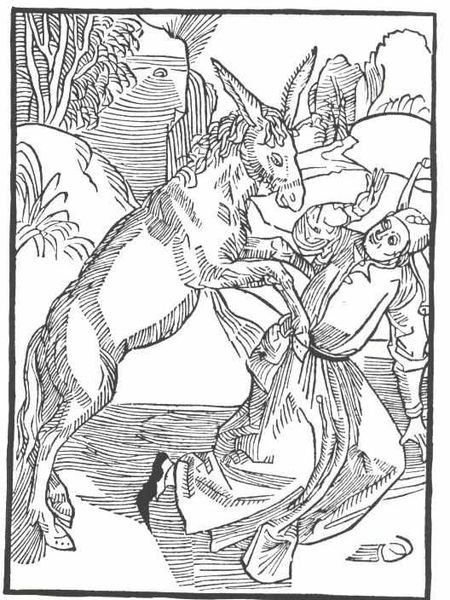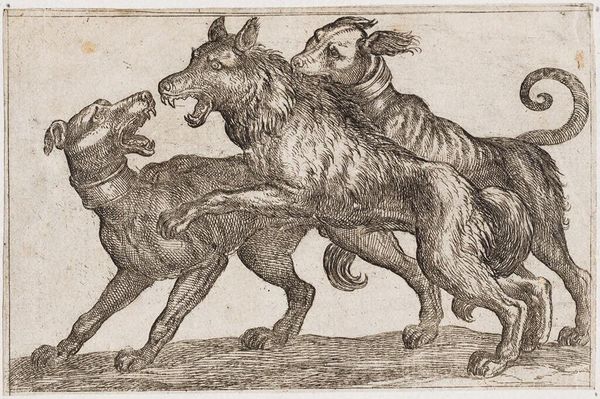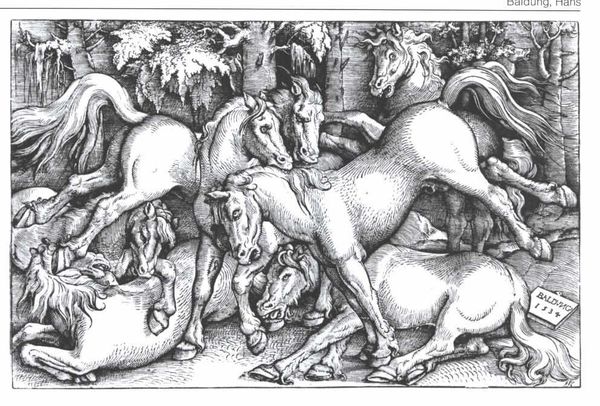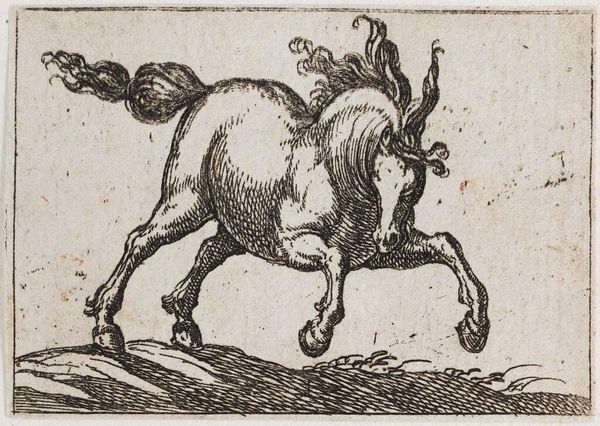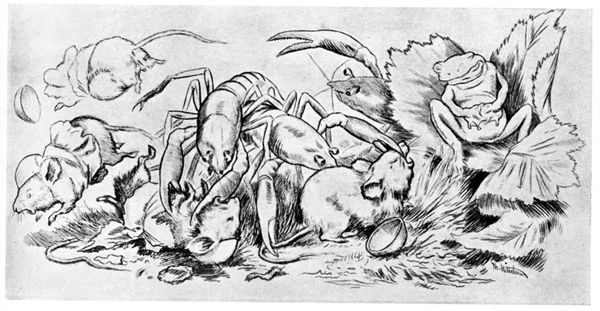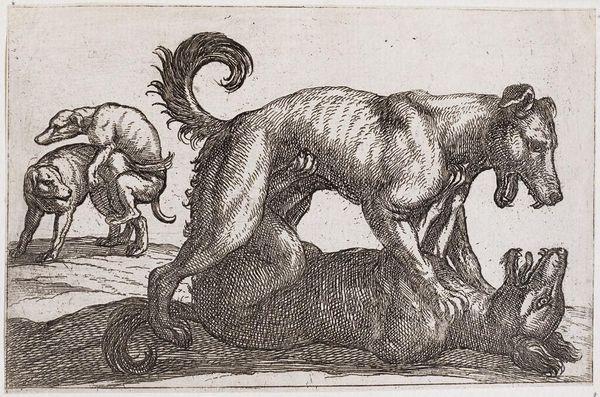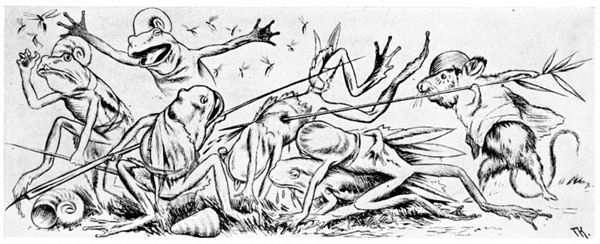
drawing, print, engraving
#
pencil drawn
#
drawing
#
animal
# print
#
pencil sketch
#
fictional-character
#
fantasy-art
#
figuration
#
form
#
11_renaissance
#
sketchwork
#
pencil drawing
#
sketch
#
pen-ink sketch
#
mythology
#
line
#
northern-renaissance
#
engraving
Dimensions: 26.5 x 20 cm
Copyright: Public domain
Editor: So this is Hans Baldung’s “A Study of Unicorn,” created in 1544 using engraving. I'm immediately struck by the animal’s strange, almost awkward, pose. It's like it’s caught mid-prance, but stiff. How would you interpret this piece? Curator: It's interesting you point that out. The "awkwardness" might be a reflection of the evolving role of the unicorn within the political and social imagination of the time. Think about the cultural function of prints like these – they weren't just pretty pictures. They were tools for disseminating ideas and solidifying power structures. How does seeing the unicorn, usually a symbol of purity and grace, in this slightly ungainly way challenge or reinforce existing beliefs about it? Editor: I suppose if unicorns were largely symbolic of royalty and nobility, as I've read, maybe showing it this way makes the animal—and those associated with it—more relatable? More human? Curator: Precisely. Baldung was working during a period of religious and social upheaval. The Protestant Reformation was challenging traditional sources of authority. Perhaps portraying the unicorn with a touch of imperfection, through form and pose, mirrors the questioning of established ideals. Who were the audiences consuming prints like this, and how might the portrayal of a mythical creature influence their perceptions of authority and the natural order? Editor: So the context shifts the symbolic weight of the image, not just the image itself. Fascinating. I also see it dated "1544." Curator: Yes, dates on art pieces are critical! Consider what political climate the artist would have lived under at the time, and if they took sides. Editor: That makes so much sense. I initially saw it as just a slightly odd depiction of a unicorn, but seeing it in the light of social and religious context makes it far more engaging. Thanks for broadening my view. Curator: Likewise, this conversation demonstrates how contextualizing art brings it to life. By questioning why a unicorn is shown in such a manner during that era, it’s no longer a simple drawing. It reflects complex power dynamics, religious questions, and emerging social trends.
Comments
No comments
Be the first to comment and join the conversation on the ultimate creative platform.
